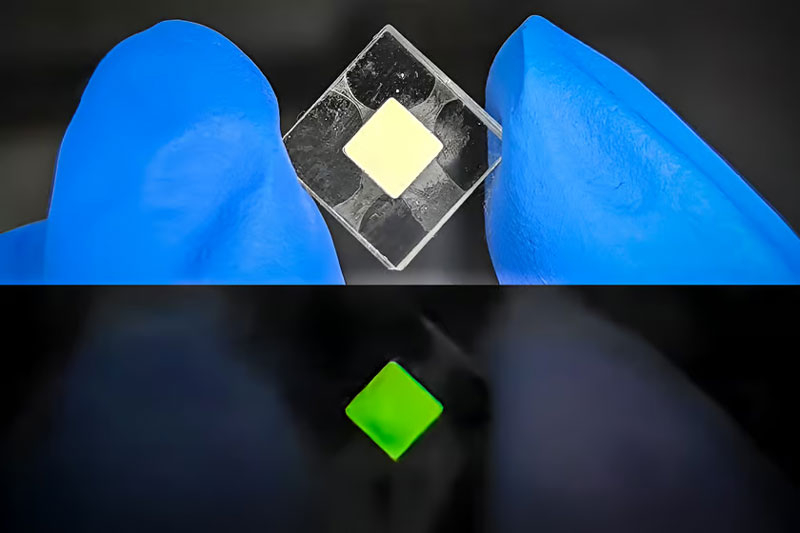This or that use of nuclear decay energy for long-term production of electrical energy is not new. New will be the efficient conversion of radiation into electricity, which is especially important in light of the proliferation of Internet-connected microsensors. This time, Chinese scientists surprised. They introduced a photovoltaic nuclear battery that turned out to be 8,000 times more efficient than previous designs.

Image Source: Kai Li
Radioactive decay energy can be converted into electricity directly using a number of semiconductors, produce heat and output electricity using thermocouples, and can excite photons that can be used to generate electricity from photovoltaic cells. Chinese researchers from Soochow University took advantage of the latter method, developing the idea from luminous watch dials to capturing photons from such materials in miniature photo panels.
Scientists created a polymer crystal and placed a little americium in it. After this, the man-made crystal began to glow with a ghostly green light. This glow will continue for decades, which makes the power source based on it conditionally eternal for practical use. The scientists placed a thin-film photocell on top of the glowing crystal and packaged everything in quartz glass to prevent radiation leakage to the outside.
The efficiency of such a nuclear battery was a modest 0.889%, but researchers claim that this value is 8000 times greater than that of previous similar designs. Hundreds of hours of testing of the element showed that it consistently produced 139 microwatts per curie (unit of radioactivity). Such elements can make a very, very durable nuclear battery for solving a wide range of problems on Earth and in space.